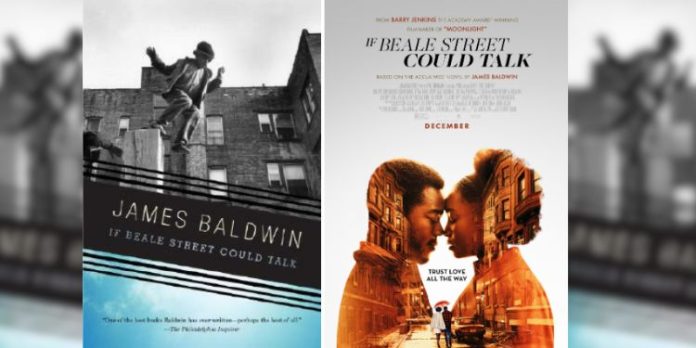Fifty years ago, James Baldwin’s novel ”If Beale Street Could Talk” was released.
The 197 page book was one of Baldwin’s rare love stories that featured heterosexual characters as well as his sole work that is narrated by a woman. Set in Harlem, New York, the title is a reference to the famous 1916 W.C Handy blues song, “Beale Street Blues, named after Beale Street in Tennessee.
10 Years Removed
Set against the backdrop of 1970’s New York, the love story between the two main characters Tish and Fonny also tackles the theme of racism and the effects of it on the Black psyche. At the time the novel takes place, and the time of the novel’s writing, America was just 10 years removed from the Civil Rights movement. Similar to that of the Reconstruction period following the Civil War, many African Americans had to learn how to live and exist in a post-Civil Rights era, culminating in the arrival of the Black Power & Black Arts movement.
”Racial Tensions Were High in 1970”
According to an article published by The White House Historical Association, “Racial tensions were high in 1970, as blacks became frustrated with economic conditions that did not improve despite advancements in civil rights.” Within the tension, African Americans began to take on more mainstream roles on the popular cultural forefront: from music, to television and film, and of course, literature. Though African American literature had been around for centuries, in the 1970’s, with the rise of redefining Black American pride, authors such as Amiri Baraka, Toni Morrison, Nikki Giovanni, and James Baldwin, began to produce work that would permeate the cultural zeitgeist.
Baldwin: The ‘Controversial’ Figure
Baldwin had long been a controversial figure in American history. A maverick in his own right, he was known at the time for his thought provoking stories exploring race and sexuality, during a time where openly discussing such topics were largely taboo. The New York native had settled in Paris, France during the late 1940’s after facing intense scrutiny for his uncompromising views on race, politics, and the role of African Americans. ““At the root of the American Negro problem is the necessity of the American white man to find a way of living with the Negro in order to be able to live with himself. And the history of this problem can be reduced to the means used by Americans — lynch law and law, segregation and legal acceptance, terrorization and concession — either to come to terms with this necessity, or to find a way around it, or (most usually) to find a way of doing both these things at once.”
“Go Tell It On The Mountain”
After two seminal works, 1953’s Go Tell It On The Mountain and 1956’s Giovanni’s Room, Baldwin’s work evolved. His participation in the Civil Rights Movement began to fuel his desire to profile the struggle of the everyday Black person through tales of racism, incarceration, gentrification, and love among a revolution. Writer Olivia Waxman, in her 2018 article for TIme magazine, “it was in this later period that he wrote If Beale Street Could Talk, which reflects many of the often invisible, but perhaps even more dangerous, forms of racism that he saw throughout American culture.”
Thirteen years after the release, Baldwin passed away in 1987. Thirty-one years later, If Beale Street Could Talk was adapted into a film written and directed by Barry Jenkins, known for his award-winning magnum opus Moonlight (2016). The film featured an ensemble cast starring Stephan James, Kiki Layne, Coleman Domingo, and Regina King. King won an Academy Award for Best Supporting Actress for her role in the film.
Fifty years after its release, If Beale Street Could Talk continued to stand the test of time. Today, it remains a seminal work in Baldwin’s catalog.








